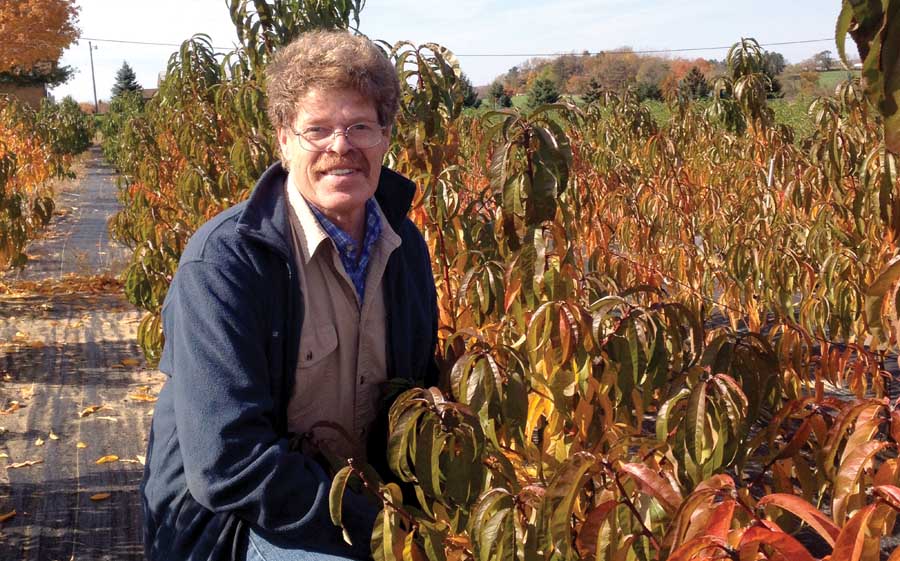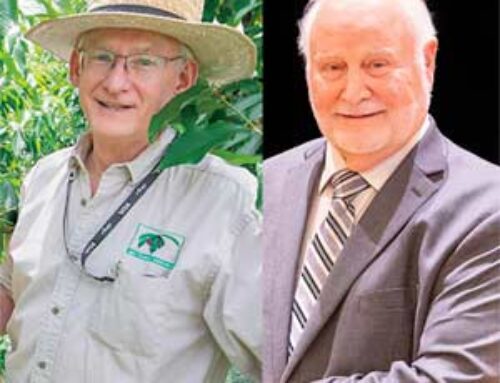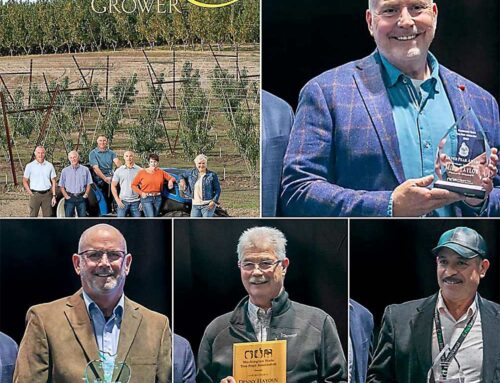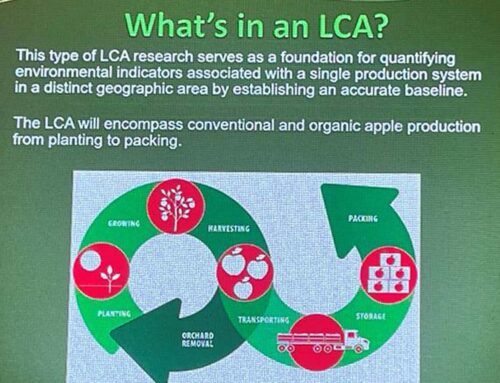Consumer tastes, marketing presentation, economic considerations, and ease of growing are all driving new apple varieties, according to Bill Shane, who is one of the organizers of the Fruit Variety Showcase at the upcoming Great Lakes Fruit, Vegetable, and Farm Market EXPO.

Bill Shane
“The apple situation is pretty diverse. Just within the fresh side of it, there is quite a bit of difference in flavor preferences. Some people like big and red, some people are really turned on by the new names and new varieties, and there are traditionalists who know what they like and it is those same apples they have liked for 20-30 years,” said Shane, senior extension tree fruit specialist at the Southwest Michigan Research and Extension Center in Berrien County.
Within the large number of new and coming varieties lie certain overarching trends, he said. For many, it’s all about redness.
Consumers often equate red with ripeness and will pass over a blush apple that has its yellow side up and red hidden in a store display.
“Growers are running to get the best appearing of the types, and we’re seeing that with new and redder strains of Honeycrisp coming out,” Shane said.

This Twin Bee Gala has both a striped skin and a red hue, both features that some new varieties favor because they give the fruit a uniform appearance on produce shelves regardless of how they are stacked.(Courtesy Bill Shane)
This is the same path followed by older varieties, including Red Delicious, Jonagold, Gala, and Empire. “Just about every fresh apple has gone through that push to find varieties that look better in the grocery produce section,” he said.
Striping is also becoming increasingly common among new varieties for the same reason: They present a more uniform appearance in a basket or on the shelf.
Another trend is toward varieties that extend the growing season. Certain up-and-coming Honeycrisp strains are good examples, Shane said. “For instance, there is a new strain called Premier that ripens earlier, so obviously if growers can get it two to three weeks earlier (than the standard Honeycrisp), that would open up a marketing niche.”
Discovered by Steve Slaybaugh of Mt. Ridge Fruit Farms in southern Pennsylvania in 2010, Premier was developed as a variety by the nearby Adams County Nursery.
More Online
The Great Lakes Fruit, Vegetable, and Farm Market EXPO will be held December 8-10 at the Devos Place Conference Center and The Amway Grand Plaza Hotel in Grand Rapids, Michigan. Go to www.glexpo.com for details.
“That area is just starting to expand.” He noted that at least four new strains of Honeycrisp have begun entering the market in the past five years, but the jury is still out on whether they will be successful. “They have more color, that’s for sure, but nobody has enough production of them yet to know how different they are and how well they will do.”
For now, he is keeping his eye on a few interesting varieties, including a completely yellow Gala called Blondie as well as the EverCrisp apple, which is a Fuji-Honeycrisp cross introduced by the Midwest Apple Improvement Association (MAIA) in Ohio.
“EverCrisp is along the same line as Honeycrisp texture-wise, but the coloration is different and does not appear to have the same bitter pit problems of Honeycrisp,” Shane said, noting that it has some of the appearance of a Fuji, but its ability to yield is not known.
EverCrisp isn’t the only intriguing variety that MAIA has up its sleeve. “There are others in the fold, and I expect more selections to come out of that group,” he said. “These are very new, though, so we’ll have to wait and see.” •
– by Leslie Mertz, Ph.D., a freelance writer based in Gaylord, Michigan.






exciting to know there are so many varieties of apples! Do you grow some or all of them